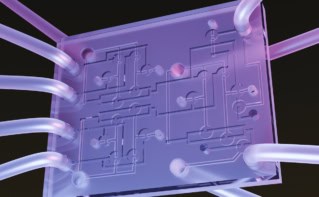
Researchers in China have unveiled a new concept for solar-powered clothing that can regulate its wearer’s body temperature. Created by Ziyuan Wang and colleagues at Nankai University, the design combines electrocaloric devices with state-of-the-art flexible solar cells. The team describes its approach in a paper in Science.
Thermoregulating clothing aims to keep the body at a safe and comfortable temperature in a wide range of environments. Broadly, it falls into two categories: passive and active. Passive thermoregulation uses materials that exploit effects including absorption, radiation and the latent heat of phase transitions to keep their wearers comfortable.
A key advantage of a passive approach is that an external power source is not needed. However, passive thermoregulation normally goes in one direction with garments either having a cooling or warming effect – but not both.
Energy challenge
Bidirectional thermoregulation is usually achieved using active materials that employ mechanisms such as coolant circulation and fluidic channels to achieve rapid heating and cooling. These systems are usually powered by batteries, which add weight and must be recharged. In principle, however, they could also be powered by harvesting energy from the Sun – but this has proven to be a significant design challenge.
“Because of their high energy consumption, it is difficult for active systems to maintain continuous thermoregulation of the human body for a long time through portable, sustainable energy-harvesting devices,” Xingyi Huang and Pengli Li at Shanghai Jiao Tong University write in a commentary article in Science that accompanies Wang’s paper.
To tackle this challenge, Wang’s team drew from the latest advances in flexible organic photovoltaics. Today, these solar cells can maintain high conversion efficiencies even when contorted into different shapes.
“If such a highly efficient and flexible organic photovoltaic unit could be integrated with a proper thermal management system, then robust, self-sustaining, and thermoregulating clothing could be achieved,” Huang and Li predict.
Flexible electrocaloric module
In their study, Wang and colleagues built up a small piece of wearable material by integrating a flexible solar cell onto a flexible electrocaloric module. The latter is a device that undergoes reversible temperature changes in response to applied electric fields.
When placed in sunlight, the solar cell harvested more than enough energy for the electrocaloric module to cool a wearer’s skin by up to 10 degrees in hot weather. Any excess energy can be stored in a small separate battery. In darkness, the device can be switched to warming mode and the stored energy used to warm the wearer’s skin by as much as three degrees. Altogether, the device can achieve thermoregulation throughout a 24 hour period.

Energy-efficient fabric helps wearers beat heat waves and cold snaps
“With its excellent thermal management performance, easy switching of the thermal management direction, and optimal temperature control, Wang’s team has demonstrated clothing that allows the human body to adapt to changes in ambient temperature,” Huang and Li say.
By integrating this technology into wearable fabrics, Wang’s team hopes the innovation could lead to a new generation of practical, solar-powered clothing that help wearers adapt to complex and challenging environments.
With its active thermoregulation, the device could allow wearers to endure scorching deserts, frigid polar regions, and many climates with rapid swings in temperature. It could even be adapted for use in outer space, where temperatures become extremely hot in direct sunlight, but plummet in the shade.
“Beyond clothing, such devices could be applied to vehicles and buildings,” Huang and Li add. “It is possible to imagine a future of all-weather thermal management that is not limited by an energy supply and where extra collected energy might even power electronic devices under special conditions.”



